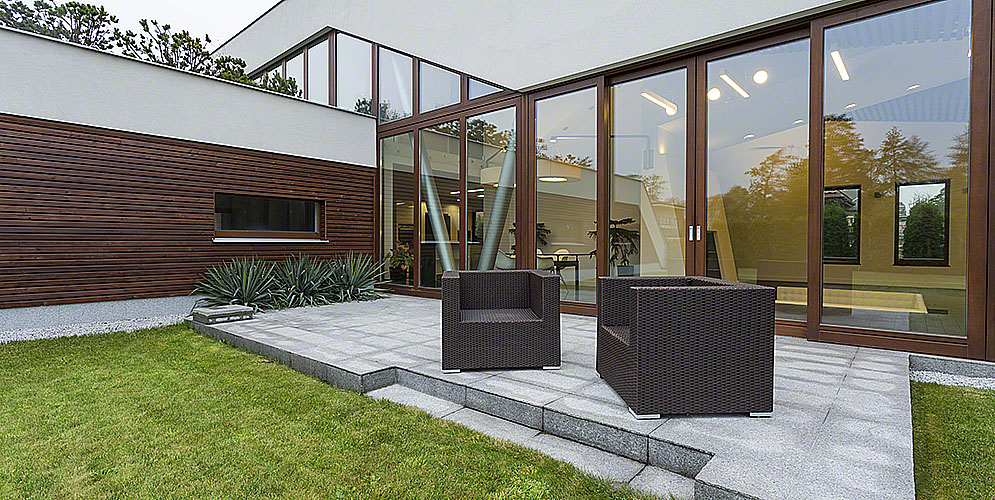
The ultimate pergola building guide
A pergola is a stunning addition to any garden or outdoor area, offering both aesthetic appeal and functional space for relaxation and entertainment. Whether you’re looking to create a shaded retreat or a stylish outdoor dining area, building a pergola can transform your backyard into a haven of comfort and elegance. This guide will walk you through the essential steps and considerations before you reach out to pergola builders, ensuring that the process is both enjoyable and rewarding.
Understanding the Basics of a Pergola
Before diving into the construction process, it’s important to understand what a pergola is and what it can bring to your outdoor space. A pergola is an open structure, typically consisting of vertical posts supporting crossbeams and an open lattice. Unlike a gazebo, a pergola doesn’t have a solid roof, allowing sunlight to filter through while providing partial shade. This structure is ideal for creating a defined outdoor space that can serve various purposes, from a peaceful reading nook to an inviting spot for alfresco dining.
The design of a pergola can vary widely, from simple and modern to ornate and traditional. The choice of materials, whether wood, metal, or vinyl, will influence the look and feel of your pergola, as well as its durability and maintenance requirements. Wood is a popular choice due to its natural beauty and versatility, but it requires regular maintenance to prevent weather damage. Metal and vinyl, on the other hand, offer greater durability with less upkeep, though they may lack the warmth and charm of natural wood.
Planning Your Pergola Project
The first step in building a pergola is thorough planning. A well-thought-out plan will save you time, money, and frustration as you move forward with your project. Start by determining the location of your pergola. Consider factors such as sunlight, wind direction, and proximity to other structures. The pergola should be placed in an area that complements your outdoor layout and enhances the overall flow of your garden or yard in accordance to the guidance from deck contractors Port Jefferson.
Once you’ve chosen the location, it’s time to consider the size and scale of your pergola. The size will depend on the intended use and the available space. A small pergola can create an intimate setting for two, while a larger structure can accommodate a dining table and chairs for family gatherings. Make sure the size of the pergola is proportionate to the surrounding space to maintain visual harmony.
Next, think about the style and design elements you want to incorporate. Do you prefer a minimalist, modern look, or are you drawn to a more traditional, decorative design? The choice of materials and the architectural details, such as the shape of the beams and the spacing of the lattice, will define the character of your pergola. It’s also worth considering additional features, such as climbing plants or outdoor lighting, that can enhance the ambiance and functionality of the space.
Gathering Materials and Tools
With your design and plan in hand, the next step is to gather the necessary materials and tools. The materials you choose will largely depend on your design preferences and budget. If you’re building a wooden pergola, common choices include cedar, redwood, and pressure-treated lumber. These woods are durable and resistant to decay, making them suitable for outdoor use. For a more modern look, you might opt for metal or vinyl materials, which offer sleek lines and minimal maintenance.
In addition to the primary construction materials, you’ll need a range of tools to complete the project. Basic tools like a tape measure, level, saw, and drill are essential for accurate measurements and cutting. You’ll also need concrete mix for securing the posts, as well as screws, nails, and brackets for assembling the structure. If you’re not comfortable using these tools, or if you’re unfamiliar with construction techniques, it may be wise to consult a professional or take a DIY workshop before starting your project.
Building the Pergola
The actual construction of the pergola begins with setting the posts. These vertical supports are the foundation of your structure, so it’s crucial that they are properly aligned and secured. Begin by marking the locations of the posts and digging holes that are deep enough to support the height of the pergola. The depth of the holes will depend on the height of your pergola patio and the type of soil in your area, but they should generally be at least 2 feet deep.
Once the holes are ready, place the posts in position and fill the holes with concrete to anchor them securely. Use a level to ensure that each post is perfectly vertical before the concrete sets. It’s important to let the concrete cure fully, which may take a day or two, before proceeding to the next step.
With the posts in place, you can now add the crossbeams that will form the top of the pergola. These beams should be attached securely to the posts, either by using metal brackets or by cutting notches in the posts for the beams to rest in. The crossbeams provide the main support for the lattice or roof, so make sure they are evenly spaced and level.
After the crossbeams are installed, it’s time to add the lattice or rafters that will form the roof of the pergola. These can be spaced closely together to provide more shade or spaced farther apart for a more open feel. The spacing and orientation of the lattice will also affect the amount of sunlight that filters through, so consider how much shade you want when planning this part of the structure.
Finishing Touches and Maintenance
Once the pergola is fully assembled, you can add the finishing touches that will personalize your outdoor space. Staining or painting the wood can enhance its appearance and protect it from the elements. Choose a finish that complements the rest of your outdoor decor, whether it’s a natural wood stain that highlights the grain or a bold color that makes a statement.
Adding climbing plants, such as wisteria or ivy, can bring your pergola to life with greenery and flowers. These plants can also provide additional shade and privacy as they grow. Outdoor lighting, such as string lights or lanterns, can create a cozy atmosphere for evening gatherings under the pergola. Consider adding comfortable furniture, cushions, and even an outdoor rug to make the space inviting and functional.
Maintenance is key to ensuring your pergola remains beautiful and durable for years to come. If you’ve used wood, regular sealing or staining will protect it from moisture and UV damage. Metal pergolas may require occasional cleaning to prevent rust, while vinyl structures typically need only a quick wash to keep them looking new. Inspect your pergola periodically for any signs of wear or damage, and address any issues promptly to avoid more significant repairs down the line.
Enjoying Your New Outdoor Space
Building a pergola is not just about adding a structure to your garden; it’s about creating a space where you can relax, entertain, and enjoy the outdoors. Whether you’re sipping coffee in the morning sunlight, hosting a dinner party under the stars, or simply reading a book in the shade, your pergola can become a cherished part of your home.
The process of building a pergola requires time, effort, and attention to detail, but the rewards are well worth it. With careful planning, the right materials, and a bit of DIY know-how, you can create a beautiful and functional outdoor space that enhances your home’s value and your quality of life. So roll up your sleeves, gather your tools, and start building the pergola of your dreams with the help of custom pergola builders Long Island.
